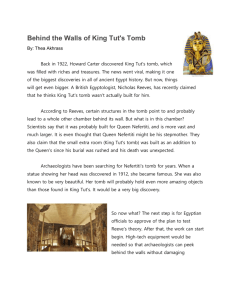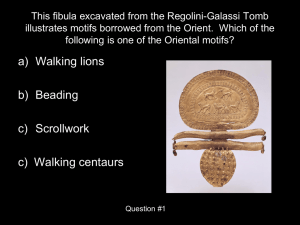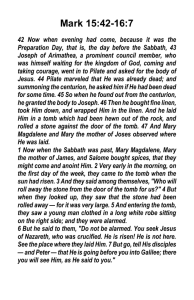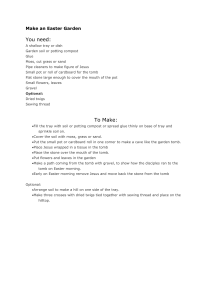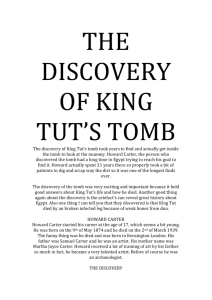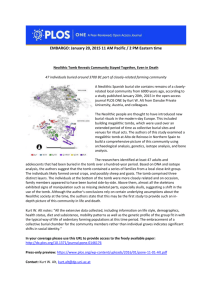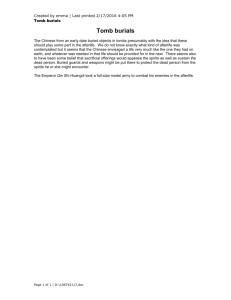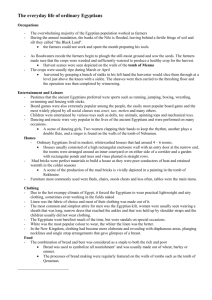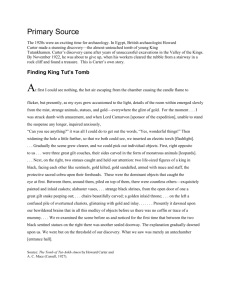Atala Masjid, Jaunpur (1408 AD)
advertisement
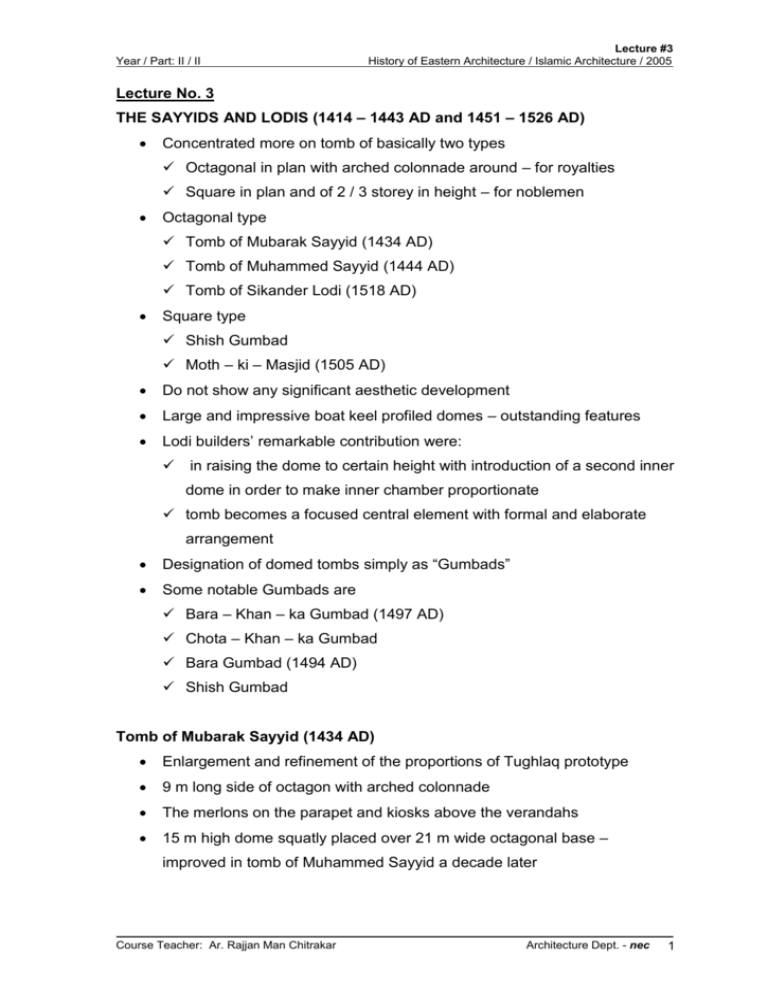
Year / Part: II / II Lecture #3 History of Eastern Architecture / Islamic Architecture / 2005 Lecture No. 3 THE SAYYIDS AND LODIS (1414 – 1443 AD and 1451 – 1526 AD) Concentrated more on tomb of basically two types Octagonal in plan with arched colonnade around – for royalties Square in plan and of 2 / 3 storey in height – for noblemen Octagonal type Tomb of Mubarak Sayyid (1434 AD) Tomb of Muhammed Sayyid (1444 AD) Tomb of Sikander Lodi (1518 AD) Square type Shish Gumbad Moth – ki – Masjid (1505 AD) Do not show any significant aesthetic development Large and impressive boat keel profiled domes – outstanding features Lodi builders’ remarkable contribution were: in raising the dome to certain height with introduction of a second inner dome in order to make inner chamber proportionate tomb becomes a focused central element with formal and elaborate arrangement Designation of domed tombs simply as “Gumbads” Some notable Gumbads are Bara – Khan – ka Gumbad (1497 AD) Chota – Khan – ka Gumbad Bara Gumbad (1494 AD) Shish Gumbad Tomb of Mubarak Sayyid (1434 AD) Enlargement and refinement of the proportions of Tughlaq prototype 9 m long side of octagon with arched colonnade The merlons on the parapet and kiosks above the verandahs 15 m high dome squatly placed over 21 m wide octagonal base – improved in tomb of Muhammed Sayyid a decade later Course Teacher: Ar. Rajjan Man Chitrakar Architecture Dept. - nec 1 Year / Part: II / II Lecture #3 History of Eastern Architecture / Islamic Architecture / 2005 Tomb of Sikander Lodi (1518 AD) A copy of tomb of Mubarak Sayyid, the kiosks being removed and replaced by semi – minarets called Gulsastas attached the base Placement of tomb within a garden, Lodi Gardens in New Delhi – a formal and elaborate arrangement along with impressive gateways – clue for the development of “Garden and tomb” of the Mughals THE SURIS (1540 – 1555 AD) An Afghan usurper, Sher Shah Sur seizes the throne of Delhi in 1540 AD for 15 years period – results in Humayun’s exile to Persia Built Purana Qila or Old Fort (the sixth Delhi) – a walled enclosure of considerable size forming citadel Inspired by Lodis – use of Lodi prototype Tomb of Sher Shah Sur, Sasaram, Bihar (cir. 1540 AD) Lodi prototype as base for design Octagonal in plan and raised to the height of 45.6 m up on the square base of 76 m side Huge pyramidal mass arranged in five distinct stages Pillared kiosks in each storey Located in the unique setting, as placed in the middle of 426.7 m sided artificially created water body approached through a gateway along a causeway Advanced structure till date with great imaginative efforts The upper structure (tomb) being placed slightly off in diagonal way with the lower platform probably due to the correction of error in the orientation of tomb REGIONAL DEVELOPMENTS / PROVINCIAL STYLES Regional manifestation of Indo – Islamic architecture flourishing under the patronage of various provincial rulers Course Teacher: Ar. Rajjan Man Chitrakar Architecture Dept. - nec 2 Year / Part: II / II Lecture #3 History of Eastern Architecture / Islamic Architecture / 2005 The style being distinct from central / imperial style at Delhi – regional in character due to effects of local architecture and indigenous art, local material and craftsmen and aspiration of local rulers Architectural developments clearly seen in Special types of brackets Various types of archways Style and size of domes and turrets used Punjab (Multan and Lahore, 1150 – 1325 AD) Earliest emerging provincial style in the cities of Multan and Lahore Use of brick along with carved timber beams – trabeated structural system Brick walls with sloping profile for stability – battered walls Concentration on tombs Tomb of Shah – Rukhn – i – Khan, Multan (1320 – 24 AD) Octagonal in plan with 27.4 m diameter base Use of battered walls with tapering turrets at each corner of octagon The tomb rises to height of 35 m with 15.2 m diameter dome Use of bricks and timber as principle building material Use of brilliantly glazed tiles to enhance the appearance Timber beams are carved and laid sunken in walls Tapering turrets work as both design and structural element Battered walls helps in retaining the spreading action of dome above The reducing mass of the pyramidal form helps in achieving structural stability Use of clerestory panels to admit light inside The tomb is in clear contrast against the surrounding desert of Multan and becomes the point of interest as building also sits on a terrace or high ground – an attempt of domination Bengal (Gaur and Pandua, 1300 – 1550 AD) Use of local materials like timber, bricks, bamboo, glazed tiles Course Teacher: Ar. Rajjan Man Chitrakar Architecture Dept. - nec 3 Year / Part: II / II Lecture #3 History of Eastern Architecture / Islamic Architecture / 2005 Typical Bengal Roof profile being used in Islamic tombs too - the heavy and continual rain becomes reason behind development of such sloping roofs in indigenous buildings Not so impressive and remarkable development however some buildings are notable like Adina Masjid, Pandua, Bengal (1364 AD) Dakhil Darwaza, Gaur, (1465 AD) Adina Masjid, Pandua, Bengal (1364 AD) A huge Jami Masjid built by Sultan Sikander Shah in his new capital Consists of courtyard measuring 122 m X 47 m with cloister around, supported over about 260 pillars and also with no less than 378 brick domes five bay cloister in the west and other directions have three bay liwan Portion of covered area is larger than the open court Dakhil Darwaza, Gaur, (1465 AD) Built by Barbak Shah, is the most artistic structure in brick A triumphal archway 22.8 m wide and 18.2 m high consists of a central vaulted with guard rooms on either sides Circular tapering structure at the corners Reminiscent of Delhi’s Tughlaq style Certain amount of ornamentation is present in form of flaming suns, rosettes, hangings lamps, niches, etc. Jaunpur (1360 – 1480 AD) City of jaunpur, located 36 km southeast of Varanasi, is said to beestablished by Firoz Shah Tughlaq in 1360 AD, later comes under the rule of Sharqi (literally eastern) dynasty Use of great pylons becomes innovative character Both Hindu and Tughlaq influence in buildings Some notable examples Atala Masjid, Jaunpur (1408 AD) Course Teacher: Ar. Rajjan Man Chitrakar Architecture Dept. - nec 4 Year / Part: II / II Lecture #3 History of Eastern Architecture / Islamic Architecture / 2005 Jami Masjid, Jaunpur (1438 – 78 AD) Atala Masjid, Jaunpur (1408 AD) Square shaped mosque with robust appearance Use of great rectangular pylons in the center of liwan, influence of circular tapering turrets of Tughlaqs resolved into rectangular shape Hindu influence is present in bracketed openings Huge arch springing between two pylons On the either side of Maqsura pylon are two identical mini – pylons and three separate gateways are also installed in northern, eastern and southern liwan Course Teacher: Ar. Rajjan Man Chitrakar Architecture Dept. - nec 5

